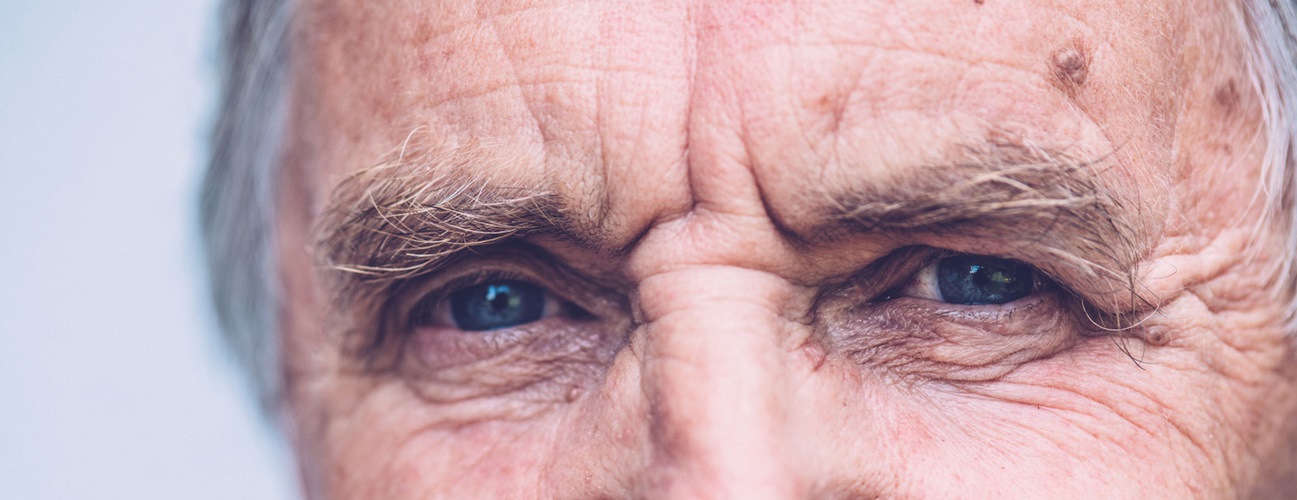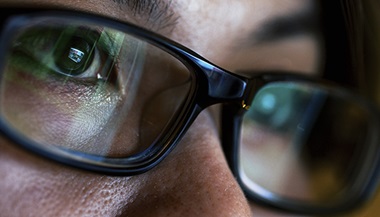Diabetes and Your Eyes: What You Need to Know
Featured Expert
How can diabetes affect your eyes?
Diabetes occurs when your body does not properly process food as energy. When you have diabetes, your body either does not respond to or does not produce insulin, which is a hormone that delivers glucose (blood sugar) to the cells in your body. Having too much glucose in the bloodstream, outside the cells where it belongs, can lead to damage of the blood vessels and nerves that run throughout your body, including to the eyes.
Diabetic Eye Disease
Diabetic eye disease refers to the group of eye conditions that can result from diabetes. These include:
Diabetic retinopathy. The leading cause of blindness in American adults, diabetic retinopathy occurs when changes in the retina’s blood vessels cause either leaking of the vessels or growth of abnormal new blood vessels on the retina’s surface. “We have great treatments for diabetic retinopathy,” says Cai. “However, it is important to get regular eye examinations so that your doctor can offer you these treatments as soon as you might need them.”
Macular edema. The macula — the center of the retina that provides sharp, straight vision — can swell due to leaky blood vessels caused by diabetes. This can result in blurred or distorted vision.
Glaucoma. One form of glaucoma, neovascular glaucoma, is caused by diabetes. High sugar levels can damage the retina’s blood vessels and result in the creation of abnormal new ones. When new blood vessels grow on the eye’s iris (the colored part of the eye), it can cause an increase in eye pressure and glaucoma.
Cataracts. Cataracts can form earlier and progress faster in people with diabetes due to the increase of sugar in the blood. This creates a cloudy buildup in the eye’s lens, resulting in a cataract.
Swelling of the Eye Lens
Another potential effect from diabetes is swelling of the eye lens, leading to blurry vision. If your blood sugar levels change quickly from low to normal, the shape of your eye’s lens can be affected and your vision can be blurred. Your vision goes back to normal after your blood sugar stabilizes. “If you’re getting eyeglasses, make sure your blood sugar levels are controlled before your exam so that you can get the most accurate glasses prescription,” says Cai.
Diabetic eye disease prevention
The best way to prevent diabetes-related eye problems is to manage your blood sugar levels, blood pressure and cholesterol levels.
Ways you can help prevent eye problems caused by diabetes include:
- Control your blood sugar. Your doctor can provide direction on how to keep your blood sugar normal and avoid fluctuations that can lead to diabetic eye diseases. “In addition to getting your eyes checked, it’s also very important to keep the blood sugars under control,” says Cai. “This is not only good for you overall, but also good for your eyes.”
- Lower your blood pressure and cholesterol. Get recommendations from your doctor on ways you can combat high blood pressure and cholesterol, because these can worsen diabetic eye disease.
- Stop smoking. Smoking can cause further damage to your blood vessels, including the ones in your eyes, so it’s very important to stop smoking.
- Avoid harmful rays. Protect yourself from the sun’s harmful ultraviolet rays by wearing sunglasses. Exposure to these rays can speed up the progression of cataracts.
Diabetic Eye Exam
If you have been diagnosed with diabetes, it’s important to have regular eye exams to evaluate the health of your eyes and detect any changes.
How does a diabetic eye exam work?
A diabetic eye exam can occur two ways:
- An eye doctor places drops into your eyes to dilate the pupils and observe the health of the retina.
- A special camera is used to take pictures of the back of the eyes. The pictures are sent to a computer program, which uses artificial intelligence to find diabetic retinopathy in the pictures. In less than a minute, the program will determine whether you have diabetic retinopathy and need to follow up with an eye doctor.
“Getting dilated eye examinations are so important,” says Cai. “This allows your doctors to identify issues early and offer you treatments if you need them to prevent vision loss from diabetes.”
Understanding Diabetic Eye Exam Results from the Artificial Intelligence System
- I received a negative result: A negative result means you do not have a level of diabetic retinopathy that needs to be assessed by an eye doctor right away. You will need to see an eye care specialist promptly if you have blurred vision or other symptoms of vision loss. If there are no vision loss symptoms, retesting in 12 months is recommended.
- I received an “image quality insufficient” result: In a small number of cases, it is not possible to take a good enough quality picture for the computer system to detect diabetic retinopathy. If this happens, you will be referred to an eye doctor for an eye exam.
- I received a positive result: A positive result means you have a level of diabetic retinopathy that needs to be evaluated by an eye doctor. This may or may not be a level of disease that needs immediate treatment. Only an eye doctor can tell if the disease is severe enough for treatment. A positive result is an important reminder to talk to your doctor about your care plan and ways to help reduce the risk of diabetic retinopathy worsening and possibly causing vision loss.







